Occupational Safety Training in the Aviation Industry
99,000 ₫
Note: The above price is calculated for one person, the price may fluctuate depending on the number of trainees participating in the course and the dynamics of the market. For more accurate price support, please refer to the quotation table or contact our consulting staff directly.
The Aviation Occupational Safety training course is a group 3 course that equips trainees with occupational safety knowledge. The course will raise awareness on accident prevention during work activities. Accordingly, the occupational safety training content follows closely Article 18 Decree 44/2016/ND-CP.
Table of Contents
Toggle1. Overview of the Aviation Industry
a. What is the aviation industry?
- The aviation industry is the business sector for transporting cargo and passengers by air, including activities such as aircraft manufacturing, design, maintenance and repair, operating commercial flights, and customer support services.
- The aviation industry plays a very important role in the global economy because it creates a fast and efficient transport network, connecting countries and cities worldwide and providing a wide range of services to customers.
- The aviation industry in Vietnam has developed rapidly in recent years. However, it has faced many difficulties, especially during the COVID-19 pandemic. Passenger numbers dropped significantly, and many airlines faced financial difficulties and survival challenges. Additionally, the aviation sector must contend with other challenges such as extreme weather, fierce competition, strict legal regulations, and security issues.
- Positions in the aviation industry include pilots, air traffic controllers, airport security personnel, aviation security officers, flight dispatch coordinators, aircraft technicians, and more.
- However, with the growth of tourism and e-commerce, the aviation industry is still expected to continue growing in the future, creating many opportunities for businesses in this sector.

b. Types of aircraft in the aviation industry
In the aviation industry, many types of aircraft are used to transport passengers and cargo. The main types include:
- Jet aircraft: Aircraft that use jet engines to fly. Jet aircraft can transport cargo and passengers over long distances at high speed.
- Helicopters: These aircraft have large rotors on top and can take off and land vertically in a small space. Helicopters are often used for cargo transport and rescue operations.
- Cargo jets: Aircraft designed to transport cargo over long distances. These planes can carry large items such as machinery, equipment, construction materials, and hazardous goods.
- Passenger aircraft: Used to transport passengers over short or long distances. Passenger planes can carry from several dozen to hundreds of passengers.
- Military aircraft: Aircraft used for military purposes, including troop transport, combat, and reconnaissance.

c. Typical aviation enterprises
Typical aviation enterprises in Vietnam include:
- Vietnam Airlines: The national airline of Vietnam, established in 1956. Vietnam Airlines provides domestic and international flights with a fleet of Airbus, Boeing, and ATR aircraft.
- Vietjet Air: A private airline in Vietnam, established in 2007. Vietjet Air offers domestic and international flights with Airbus and Boeing aircraft.
- Jetstar Pacific Airlines: A private airline in Vietnam, established in 1991. Jetstar Pacific operates domestic and international flights with Airbus and Boeing aircraft.
- Bamboo Airways: A newly established private airline in 2017, offering domestic and international flights with Airbus and Boeing aircraft.
- Pacific Airlines: A private airline established in 2020, formerly the low-cost airline Jetstar Pacific Airlines. Pacific Airlines provides domestic and international flights with Airbus and Boeing aircraft.
Other international airlines operating in Vietnam include AirAsia, Cathay Pacific, Korean Air, Emirates, Qatar Airways, Singapore Airlines, and more.

d. Jobs in the aviation industry
The aviation industry offers many different jobs, including in-flight positions and ground support roles. Some common jobs include:
- Pilot: Operates the aircraft and is responsible for flight operation and safety.
- Flight attendant: Onboard staff responsible for passenger care and ensuring safety during flights.
- Aircraft technician: Responsible for maintenance, repair, inspection, and installation of aircraft systems.
- Air traffic controller: Works at air traffic control stations to ensure safe and efficient navigation of flights.
- Passenger shuttle driver: Drives vehicles transporting passengers between airport areas.
- Security inspection officer: Performs security checks before passengers board the aircraft.
- Airport manager: Ensures airport operations run smoothly and safely, including flight management, flight attendant supervision, aircraft maintenance, and other support services.
- Flight dispatch coordinator: Works at the dispatch station to ensure efficient and safe flight scheduling.
Other roles include in-flight catering, ticketing, cargo transport management, airport operations, staff management, and many more.
2. Overview of aviation occupational safety training
a. What is aviation occupational safety training?
- Aviation occupational safety training provides workers with awareness of how to prevent workplace accidents. Workers directly involved in aviation belong to Group 3.
- The training helps workers recognize and avoid hazards, reducing the risk of workplace accidents during their tasks.
b. Training duration
Initial occupational safety training:
- Total training duration is at least 24 hours, including examination time.
- 8 hours theory on labor safety and hygiene policies and laws
- 8 hours theory on basic occupational safety and hygiene knowledge
- 4 hours theory on specialized occupational safety content
- 2 hours practical training on specialized occupational safety content
- 2 hours theory test at the end of training
The safety training center divides the course into multiple sessions based on employee schedules. Typically, there are 6 sessions over 3 days, provided the aviation company arranges continuous training time.
Periodic occupational safety training:
- Before the occupational safety card expires, workers seeking renewal must complete periodic occupational safety training, with periodic training duration being at least 50% of the initial training duration.
Explanation: Total periodic training duration is at least 12 hours, including examination time. After completing the periodic training and passing the test, workers will be reissued and their occupational safety card extended.
c. Training content
| No. | TRAINING CONTENT | TRAINING DURATION (HOURS) | |||
| Total | Including | ||||
| Theory | Practice | Test | |||
| I | Labor safety and hygiene policies and laws | 8 | 8 | 0 | 0 |
| 1 | Overview of legal documents on labor safety and hygiene. | 6 | 6 | ||
| 2 | Standards and technical regulations on labor safety and hygiene. | 1 | 1 | ||
| 3 | Specific regulations by state management agencies on safety and hygiene for constructing, expanding, or renovating facilities for manufacturing, using, storing, and inspecting machinery, equipment, materials, and substances with strict safety and hygiene requirements. | 1 | 1 | ||
| II | Basic knowledge of occupational safety and hygiene | 8 | 8 | 0 | 0 |
| 1 | Basic knowledge of hazardous and harmful factors in the workplace. | 4 | 4 | ||
| 2 | Methods to improve working conditions. | 1 | 1 | ||
| 3 | Safety culture in manufacturing and business. | 1 | 1 | ||
| 4 | Rights and responsibilities of employers and employees; labor safety policies; roles and responsibilities of safety networks and safety officers. | 1 | 1 | ||
| 5 | Safety regulations, signage, safe use of equipment and personal protective equipment; first aid skills and prevention of occupational diseases. | 1 | 1 | ||
| III | Specialized occupational safety content | 6 | 4 | 2 | 0 |
| Comprehensive knowledge of machinery, equipment, and substances causing hazards; risk analysis, evaluation, and management of occupational safety; safe working procedures with machinery, equipment, and substances with strict safety requirements. | 6 | 4 | 2 | ||
| IV | End-of-course occupational safety test | 2 | 2 | 0 | 0 |
| Total | 24 | 22 | 2 | ||
See more training content of 6 groups
d. Occupational safety card
After completing the occupational safety training and passing the test, workers will be issued a Group 3 occupational safety card (commonly called Group 3 occupational safety certificate).
The Group 3 safety card shows information such as full name, date of birth, job, and specific working environment, along with training duration, red stamp, and signature confirming course completion.
According to Clause 2, Article 24 of Decree 44/2016/ND-CP, there are two cases:
- If the employer and employee have a labor contract, the employer must stamp and certify the occupational safety card for Group 3 workers after training at an occupational safety unit and passing the test.
- If the worker is freelance or seasonal, without a labor contract, the training unit must stamp and certify the safety card after the worker completes the training and passes the test.

3. Identifying Hazards in the Aviation Industry
The aviation industry is a high-risk field, so there are many potential hazards, but the most common hazards include:
- One of the main hazards in the aviation industry is airplane accidents, which can cause serious damage to people and property.
- The risk of fire and explosion is very high in the aviation industry because flammable and explosive substances are used to operate aircraft.
- Technical failures such as engine malfunctions, aircraft breakdowns, and other technical problems can lead to accidents or endanger passengers and crew.
- Bad weather, such as rain, snow, and strong winds, can affect aircraft takeoff and landing, increasing the risk of accidents.
- The aviation industry is also a common target for terrorist attacks, including bombings, hijackings, or killings.
- People working in the aviation industry often face health risks due to long flight hours and time zone changes, causing fatigue, contraindications, hypertension, and mental health issues.
4. Safety Measures for the Aviation Industry
Safety measures in the aviation industry include:
- Training: All aviation personnel must undergo regular occupational safety training and meet international safety standards.
- Periodic inspections: All aircraft must be inspected periodically, maintained according to procedures, and meet safety standards.
- Security: Aviation is a target for terrorist attacks, so strict security measures must be applied at airports and on flights.
- Research and development: New technologies and equipment must be continuously researched and developed to improve aviation safety.
- Weather impact management: Aviation operations depend heavily on weather, so a management system must be in place to ensure safety.
- Firefighting equipment: Pilots and passengers must be equipped with adequate safety and firefighting equipment to handle emergencies.
- Operational management: All aviation activities must comply with international safety regulations and standards to ensure safe operations and meet customer requirements.
- Regularly conduct workplace environment monitoring in factories, collect and analyze harmful factors for workers, and adjust them to reduce hazards to prevent occupational diseases.

5. Types of Accidents in the Aviation Industry
Accidents in the aviation industry can include:
- Collision accidents: These occur when two or more aircraft, trucks, cargo vehicles, or other vehicles at the airport collide with each other.
- Weather-related accidents: Bad weather, storms, fog, snowfall, strong winds, earthquakes, and other meteorological events can cause accidents during aircraft operations.
- Worker accidents: Aviation employees can face hazards while working on aircraft, on land, or in other aviation-related areas.
- Fire and explosion accidents: These can occur on aircraft, at airports, or in other aviation-related areas.
- Security-related accidents: These involve attackers using weapons or other means to assault aircraft or other aviation areas.
- Missing in-flight accidents: This type of accident occurs when an aircraft or spacecraft loses communication or goes missing during flight and is not found.
6. Benefits of Occupational Safety Training in Aviation
An Toan Nam Viet provides businesses with the following benefits after completing occupational safety training courses in compliance with Decree 44/2016/ND – CP regarding occupational safety and hygiene for companies, factories, and businesses:
- Workers can identify potential occupational hazards and take preventive measures to avoid accidents.
- Businesses can establish risk prevention measures in manufacturing, operation, and maintenance processes.
- Reduce costs associated with workplace safety risks.
- Uninterrupted operations increase labor productivity and product quality.
- Compliance with occupational safety laws reduces legal risks.
- Enhances reputation and professionalism, elevating the business brand.
An Toan Nam Viet’s training courses are solutions to prevent external hazards from affecting individuals, helping them avoid injuries or fatalities.
7. Customer Feedback After Completing Training
An Toan Nam Viet has years of experience supporting businesses across Vietnam, especially in southern provinces. This responsibility is highly valuable, so our occupational safety training is increasingly professional. Our growth is driven by positive feedback and suggestions from businesses. Below are testimonials from partners we have served.
Hoa Dat Construction and Trading Joint Stock Company
“Nam Viet’s service has greatly helped us simplify occupational safety and complete safety documentation for our operations. The consulting team was responsive and timely to our questions. 5 stars for Nam Viet.”
See more customer feedback from An Toan Nam Viet
8. An Toan Nam Viet’s Occupational Safety Training Capability
An Toan Nam Viet is a reputable and quality occupational safety training center in Vietnam. Our courses are continuously conducted at manufacturing workshops, factories, or construction sites across all 63 provinces in Vietnam.
License for occupational safety training
- An Toan Nam Viet has been inspected and certified by the Department of Labor Safety under the Ministry of Labor – Invalids and Social Affairs, granting certification for occupational safety and hygiene training. This strengthens our occupational safety training capability.

Materials and Lectures
- Before being used in occupational safety training courses, materials are reviewed and approved to ensure accuracy and effectiveness.
- Teaching methods of instructors follow An Toan Nam Viet standards, developed by experts in occupational safety and hygiene training to maximize knowledge absorption for trainees.
Facilities
- Controlling classroom factors that affect training improves teaching efficiency and trainee knowledge retention.
- Our training facilities include spacious classrooms meeting standards for area, lighting, and training equipment.
9. Nationwide Reputable Occupational Safety Training Center
At An Toan Nam Viet, we prioritize professional occupational safety training. Teaching workers how to protect themselves equips them with essential safety skills for their work life, contributing to national development.
To ensure effective training, we carefully prepare every detail, from tools and teaching equipment to curriculum, documents, sound, and lighting.
Our occupational safety instructors are experienced experts, some with research on hazard identification across industries and prevention methods.
Lectures are practical, engaging, and easy to understand, helping workers absorb knowledge effectively. Training strictly follows Decree 44/2016/ND-CP.
Workers gain knowledge on hazard prevention and self-protection measures, and learn to apply them effectively in real work scenarios.
Our training center proudly provides professional occupational safety training with advantages including:
- Competitive training costs with guaranteed quality.
- Flexible training schedule to match company operations.
- Quick and legally compliant certification procedures.
- Instructors with many years of professional experience.
- Classrooms optimized for teaching efficiency and knowledge retention.
- Lectures tailored to occupational safety requirements in businesses.
- An Toan Nam Viet works dedicatedly and professionally to provide fast and accurate support to clients.

10. Additional References for Aviation Occupational Safety Training
1 review for Occupational Safety Training in the Aviation Industry
No comments yet

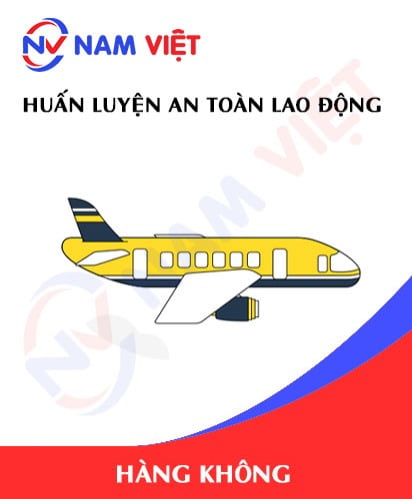
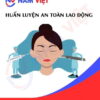
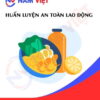



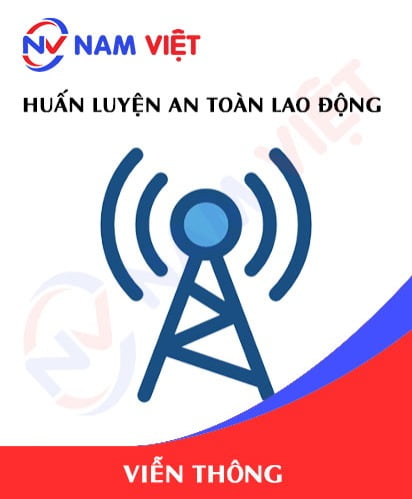
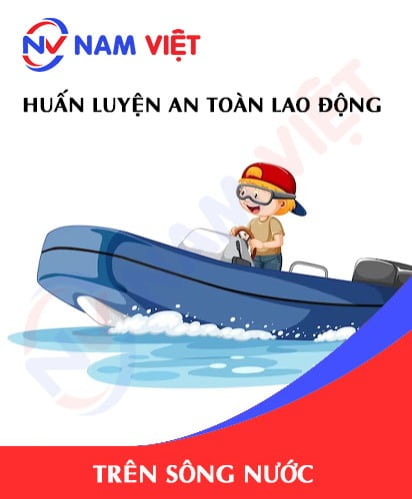
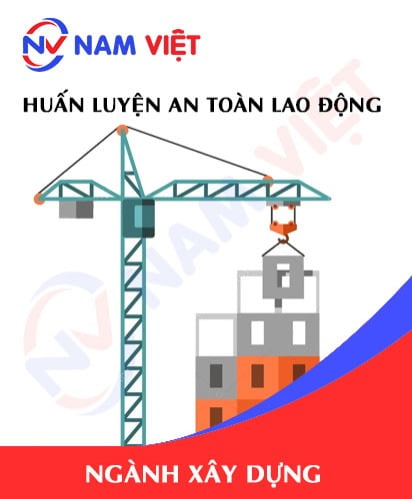

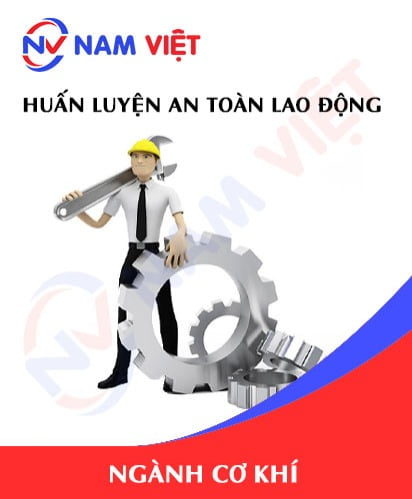
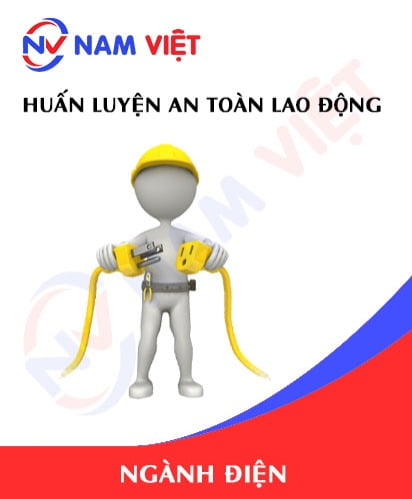


caotiensyhung.07081999
giảng viên dạy rất sinh động dễ hiểu!